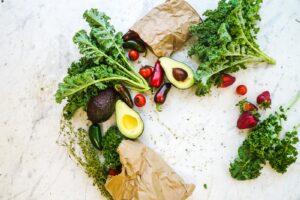As part of my nutrition work, I have been very interested in longevity research.
How can people learn to live into their 90s, or even to over 100 and still be healthy?
Dan Buettner worked with a team from National Geographic. They identified five areas in the world that have an unusually large proportion of centenarians. They popularized this research in the book The Blue Zones by Beuttner. Four areas were in relatively isolated regions in the countries of Italy, Japan, Costa Rica and Greece. The fifth Blue Zone is in the Seventh Day Adventists community of Loma Linda, California.
I have had a type of “blue zone” in my family, too. My grandmother was one of ten children, nine of whom lived to adulthood. All of them lived at least into their 80s. My grandmother lived to age 96. She took no daily medication and was only side lined at age 89 due to macular degeneration. My mother is still living at age 91. I hope to continue this family tradition of longevity with good health.
It is beyond this article to look at all nine Blue Zone longevity recommendations identified by Buettner, but I will review the diet and exercise factors. In some cases, this is my take on the Blue Zones data, and not the actual wording used in the book.
Maintain a BMI in the Normal Range
The vast majority of those aged 90-plus identified in The Blue Zones book had weights in the normal range for their height (BMI between 19 and 25). My grandmother maintained a normal BMI for her entire life. In contrast, almost 72% of the US population has BMIs greater than 25 with almost 40% in the obese range of 30 BMI or greater. Cancer, type 2 diabetes and heart disease are all highly correlated with obesity. Both exercise and a healthy diet contribute to maintaining a normal BMI throughout your lifespan.
Move a Lot, Naturally!
The vast majority of the centenarians in the Blue Zones were active throughout their lives. Many of them were shepherds or farmers for most of their lives. Many others kept home gardens. The Seventh Day Adventists exercised daily at a much higher rate than the average American. My grandmother walked and worked in her garden until her eyesight gave way in her early 90s. None of these populations did high intensity exercise; instead, the regular natural movements of walking, often five or six miles daily, and the bending and stooping through gardening and other activities, helped them maintain good health.
Eat Like a Bird
Another way to maintain a normal BMI is to eat fewer calories consistently over a lifetime. There are several ways Blue Zone seniors have done this. Okinawans have a phrase “hara hachi bu”. This translates to “eat until you are 80% full”. It takes about 20 minutes for your brain to register how full you are after a meal, so by eating until you feel 80% full, you should be full without overeating. The Ikarians are mostly Greek Orthodox; this religion has two fast days per week, a six week Lenten period, and several shorter fasts during other time of the year. Researchers estimated that the Okinawans averaged 1900 calories per day, and the Ikarians 2000 calories. My grandmother did not fast but people always remarked that she “ate like a bird”. She ate almost any type of food, but had exceedingly small portions at least during her senior years. I think this was one major factor that helped her to maintain a healthy normal weight throughout her lifetime.
Have a Plant Slant
Over 50% of the Seventh Day Adventists in the fifth Blue Zone were vegetarian or vegan, but about 48% of them also ate meat to some extent. People in the other four Blue Zones ate meat, but only about once per week. Dairy products, often goat or sheep’s milk products and eggs, were much more prominent in their diets.
Possibly because meats were limited, plant foods comprised a larger portion of the diets, and they varied by culture. Beans, corn tortillas, and lots of fruits predominated in Costa Rica. White potatoes, lentils and greens were eaten in Ikaria, and sweet potatoes, fermented soy and vegetables were popular foods in Okinawa. Plain oatmeal plus fruit was a common breakfast food in Loma Linda. An analysis of most of these diets found them to be high in fiber and very low in added sugar. For your best longevity, strive for five or more servings of vegetables per day plus at least one serving of beans or other legumes and some fresh fruit. Whole grains such as oatmeal, stone ground grits or corn tortillas, 100% whole-grain breads are also healthy choices. Nuts, frequently eaten by many Seventh Day Adventists, have been found to be heart healthy by researchers at the Loma Linda Medical University.
A Little Wine is Good for You
The Sardinians in Italy and the Ikarians in Greece both drink red wine daily. The Okinawans likewise had rice wine (sake) regularly. I remember that my grandmother liked her weekly glass of wine too. She alternated between sherry and a sweet white or red wine. But only one glass on Saturday night! Research has shown that red wine is high in heart-healthy antioxidants. If you don’t drink, I do not advise you to start. The vast majority of Seventh Day Adventists abstain from all alcohol. But one daily glass of red wine as an appetizer or with dinner can be an adjunct to a healthy diet for many people.
Heart disease and cancer are the top two causes of death in the US, by far, with stroke, Alzheimer’s and diabetes among the top six. These diseases are highly related to diet and lifestyle, and genetics are only a minor component. I can’t promise that you will live to 100 if you adopt and maintain the principles in this article. But by avoiding smoking, exercising regularly, eating healthy whole foods, and thus maintaining a normal weight, you will reduce your likelihood of these diseases.
Develop a Culture Around a Healthy Lifestyle
Four of the five Blue Zones were in historically isolated areas of the world. This meant that Western processed foods were not a frequent part of their diet for most of their lives. Most of these centenarians also gardened for a large part of their lives, so eating natural whole foods was the norm. In the fifth Blue Zone, the Seventh Day Adventists in Loma Linda, CA, healthy living is a major tenant of Seventh Day Adventist doctrine. Members are strongly discouraged from smoking or drinking alcohol. They are also strongly encouraged to exercise regularly and to eat a whole foods diet, preferably vegetarian. So although they live in the US, the long-living and healthy Seventh Day Adventists have followed their religious culture instead of the culture of their surrounding society.
As individuals we cannot change the prevailing American culture, which is not at all conducive to a healthy lifestyle. Instead, we need to change ourselves. Hopefully, our family and friends will also adopt the healthy eating, exercise and lifestyle principles discussed in this article.
Join me in striving to live to be 90 plus and healthy, like my grandmother and many in the Blue Zones! Contact me via my website for personalized healthy nutrition and lifestyle support.

Ginger Hudock’s eclectic background includes degrees in vocal performance, finance and nutrition. She worked as the Vice Chancellor for Business and Finance at USC Aiken for 25 years before beginning her nutrition career. Her writing has appeared online at TheMighty.com, in addition to a monthly nutrition column for Aiken’s Bella Magazine. You can read more of Ginger’s articles about food, nutrition, faith and personal finance at her blog www.GingerHudock.com.























